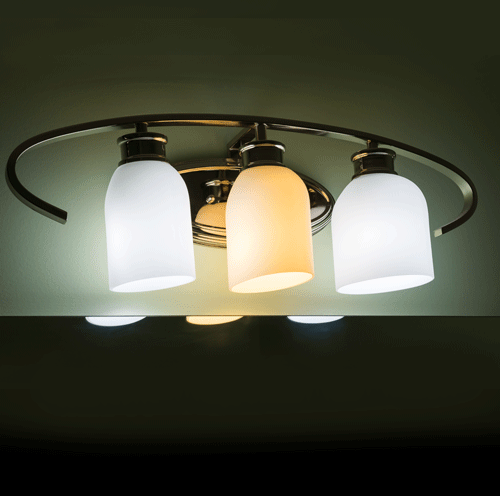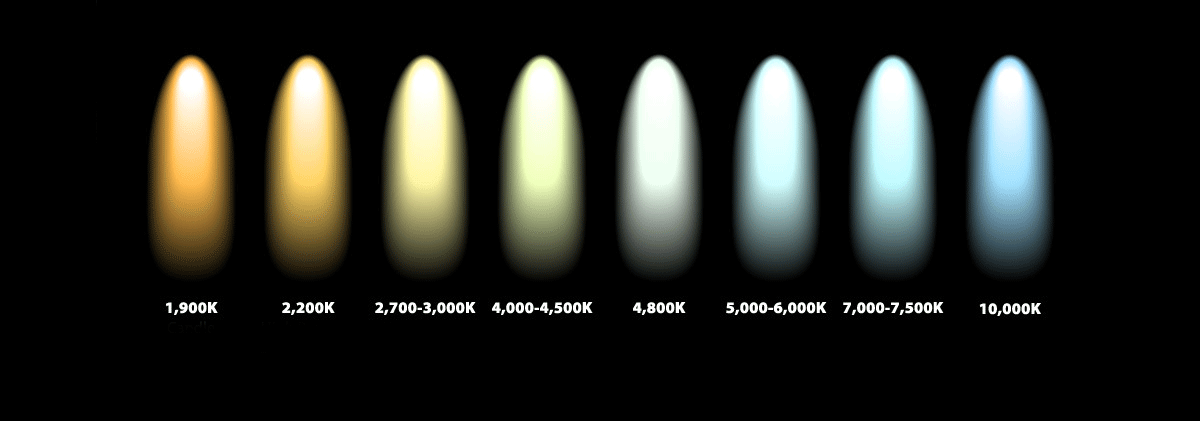Color temperature matters

This week we offered something unique here in Santa Fe: A free one hour home lightingconsultation. The response was enormous and we have been busy visiting unique homes throughout Santa Fe, NM.
What surprised us, however, was that these were not our typical clients with remodel or new construction projects, but people, who were just plain frustrated with their existing lighting and didn’t know how to fix the situation.
The new LED technology and the phasing out of the familiar Edison bulbs have caused a lot of confusion and as “lighting people” we sometimes forget, just how complex the situation has become.
We visited one home where the homeowner Sara was at her wit’s end because nothing seemed right, but she had spent a fortune on new LED lamps throughout her living area.
Well, we had to agree that the result was horrible. She had bought 15 LED lamps with a color temperature of 5000K. That is an extremely cool temperature I would never consider for residential use, except outdoors. We are so used to the 2700K of the old incandescent lamp (bulb) that is now being phased out and if we use dimmers with them, even lower color temperatures, like a warm 2200K. But how was Sara supposed to know when she picked these LEDs off the shelf? Nobody told her. We never heard those numbers when we chose an incandescent lamp because they were all the same color temperature and behaved the same way when dimmed.
At another home we stepped into a completely jarring mix of lamp types: Still-functioning incandescent lamps next to exposed curliecue compact fluorescent lamps in various color temperatures, a few halogen MR16s with various color reflections and to top it off, the newest proud acquisition: a variety of LEDs. Wow! As I said above, the first impression was jarring. Again it was a color temperature issue. Back in the day things were sooo easy (sigh!) You bought a light bulb, screwed it in, and voila! If you wanted to get fancy, you added a dimmer. All lamps had the same color temperature, a warm glow. When the compact fluorescents hit the market everyone was excited about the great energy savings, but less about the quality of the light.
The choice was pretty much between ghastly pink (“warm white”) or ghastly green or blue (“cold white”). CFLs did improve dramatically over the years, but those first years were damaging to their reputation. It didn’t help that millions of really cheap CFLs of questionable quality were pushed onto the market. But, then again, they are still around - lots of them!
The nice small halogen MR-16s are so widely used and loved for their wonderful crisp light quality and the size that allows it to fit into small fixtures. Often the lamp itself is completely hidden inside the fixture, but in some fixtures the entire lamp is visible, which lends it a minimal look.
It is in this case good to know that not all MR16s will look the same when they are turned on. MR stands for Multifaceted Reflector. It is a pressed glass reflector with an inside surface composed of facets.
While the majority of the light exits the front of the lamp, the backside shows a unique faceted glow of light. The only problem is that this light is not the same for every manufacturer. Some MR16s have a pink hue, others various shades of yellow. This means that you need to be aware of the brand of lamp you use when you re-lamp your fixtures with exposed MR16s if you have several of them in the same room. Otherwise you have a vivid mix of pinks and yellows.
LEDs are incredible and are revolutionizing the lighting world these days. Since the entire concept of solid state lighting is so new there is obviously a learning curve for everyone. But once the principles of color temperatures and CRI (Color Rendering Index) have become everyday knowledge a lot of the confusion will settle down. (I know, I know that the metrics and terms then will change, since it is in the works, but – one step at a time.) 2700K is similar to the warmth we are used to from incandescent lamps, 3000K is a crisper, whiter light that might fit better in a contemporary setting with lots of whites where you don’t want to add a yellow hue. Cooler temperatures than that are not often used in residential settings, but have their place in retail displays, security lighting, work places or garages.












